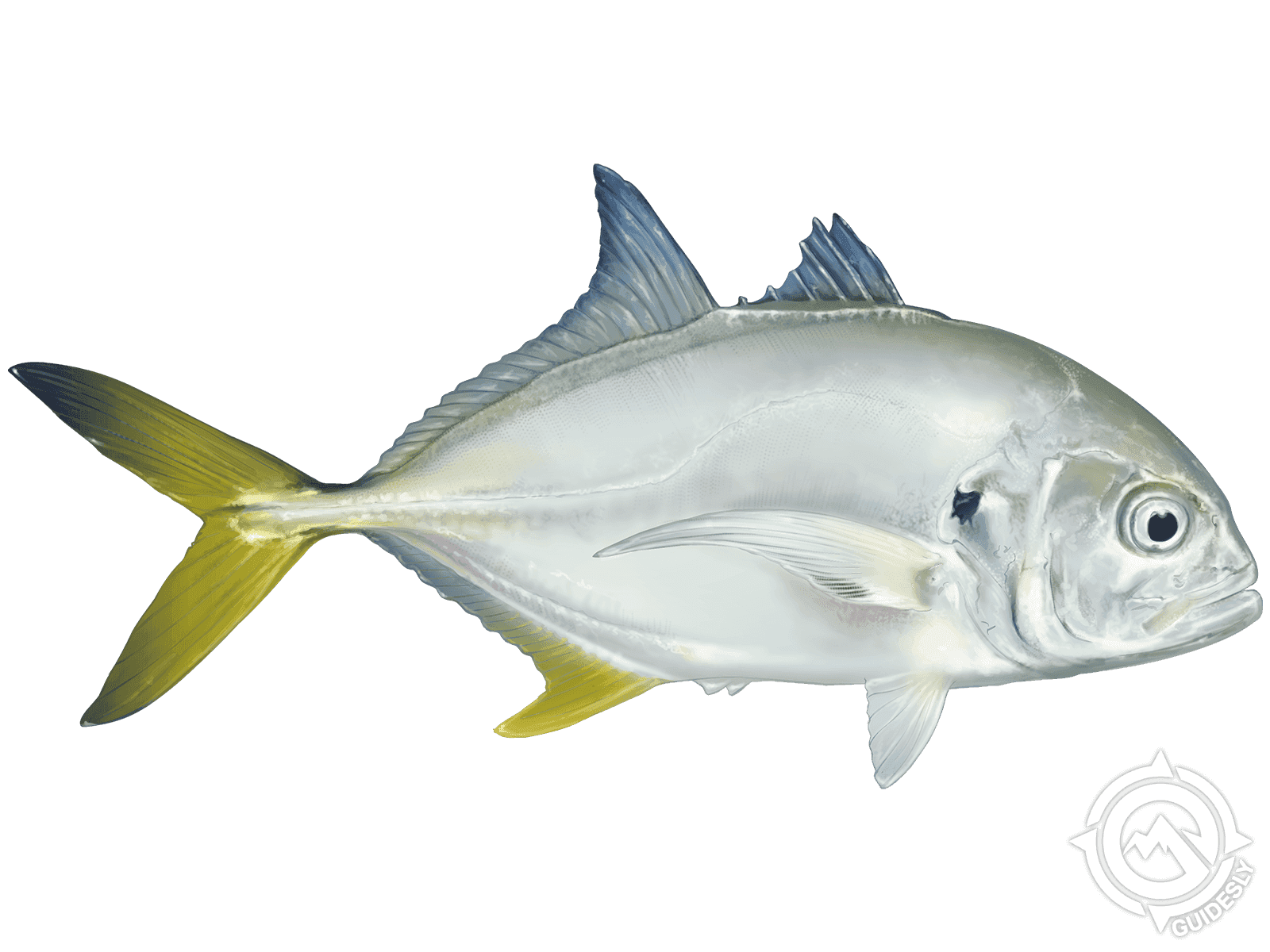Black Jack

Species Details
Caranx Lugubris
Carangidae
Perciformes
Offshore, Reef, Wrecks
12 - 20 lbs.
27" - 32"
Black Jack (Caranx Lugubris) Description
A member of the Jack family and like the Pompano, the Black Jack are known for their black to gray fins which their name is derived. They also have jet black scutes that branch from their deeply forked, short tail. Black Jacks are not moderately round like their Pompano cousins, rather they have a steep slope that makes them appear as if they have a forehead. Their whole body is a gradient of an olive-brown to a dirty white-pewter grey color.
Black Jacks are also known for having a larger mouth than most of their cousins. They also have scythe-shaped pectoral fins. Their dorsal fin is also split into two sections with the first section having eight spines whereas the second section has one spine accompanied by 20-22 rays. It has a slight indent near its nostrils due to the concave at its snout and nape.
The Black Jack can also be mistaken for a Giant Trevally but the best way to tell them apart is through the darker coloration. Black Jacks are darker in color and have a scaly breast, unlike the Giant Trevally.
Diet and Size
Black Jacks are carnivorous and predatory fish. They eat a variety of fish, mollusks, and crustaceans.
Black Jacks are commonly 2 - 3 feet and 12 - 24 pounds but can reach even bigger sizes.
Interesting Facts
- Black Jacks produce croaking sounds by grinding their teeth together while releasing gas from their air bladders.
- They are known for carrying ciguatera toxins which is why they’re usually thrown back into the water.
- They like hanging around deeper waters. People find it rare for them to show up near the surface.
- Black Jacks like their cousins are fast-swimming fish.
Fishing Techniques: How to Catch a Black Jack
Like any member of the Jack family, they are fierce and tenacious fighters. It also doesn’t help that the Black Jacks are also known for being voracious eaters. As highly predatory animals, you can make this work to your advantage.
Usually, you’ll find Black Jack among a school of other fish. Using live bait such as shrimp, mollusk and other crustaceans works well.
Some great lure choices consist of silver spoons, hard and soft plastic baits that imitate their prey. Crankbaits and swimbaits are good options.
Black Jack Habitat and Distribution
Black Jacks often stay in the deep. They stay in clear waters at the edge of the more outermost reefs. They loiter around in brackish waters and sometimes hang near the deeper parts of the coast.
They are found in the Southern Pacific United States, Hawaii, and in the warmer water of the Atlantic such as the Caribbean Islands.







